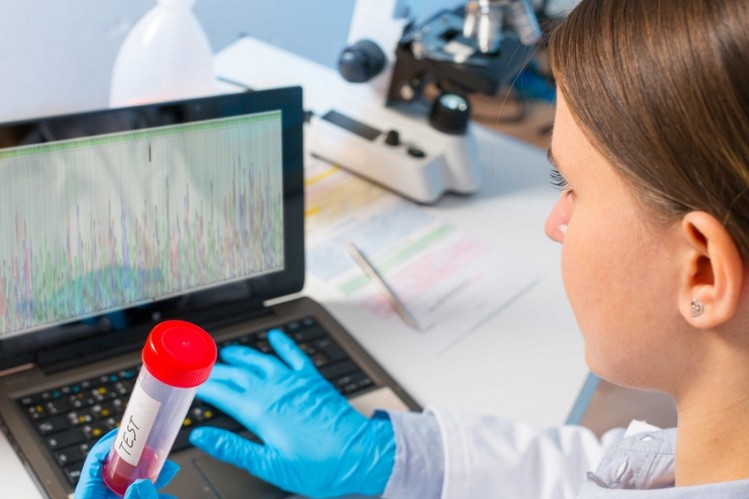2018 is the year of NGS tech in food safety labs – Clear Labs

CRISPR is a gene-editing tool and can be used for Genetically Modified Organisms (GMOs).
NGS targeted sequencing looks for specific threats and pathogens to give information the user wants on species and serotype.
Clear Labs said some brands began piloting NGS technology in 2017 and the universality of such tests will gain popularity in the shift towards a more proactive food safety system.
“In 2018, we expect NGS to be a complement to PCR, not a replacement. But in the not-too-distant future, the cost and speed of NGS will meet and then quickly surpass legacy technologies. That’s the point at which adoption will increase in speed and PCR will become obsolete.”
The firm added it expects in-house and third party labs to acquire NGS sequencers and the complementary workflow, databases and software analytics required to integrate such testing into more traditional processes.
NGS targeted sequencing
Mahni Ghorashi, of Clear Labs, said talk is moving beyond whole genome sequencing (WGS) that sequences the entire genome and is the most specific sequencing test that can be done.
"WGS was the entry point into NGS technologies with the FDA and their initiative with GenomeTrakr that got the industry talking about NGS,” he told FoodQualityNews.
“It has evolved beyond that now and in 2018 we are going to start to see an NGS application called NGS targeted sequencing which is looking for specific threats within the food supply whether that be pathogens or adulterants or fraud or GMOs.
“They are using NGS to target specific gene regions across the genome to give you that information back in a way that hasn’t been possible to date with legacy based technologies such as PCR or antigen-based testing in food safety.
“You are looking for those genes that are relevant to give you enough information that you want – pathogen species, serotype or authenticity – whatever the question is you are looking for. You are targeting specific gene regions and sequencing those so the cost is much cheaper.”
Ghorashi said market education on NGS is key but that learning curve will get faster as more companies start to use it.
“The more forward brands like Walmart, Mars and the Nestlé’s of this world are on top of it. The FDA’s sponsorship of this technology has put quite a bit of top down pressure on the market to adopt it so that has been one of the drivers,” he said.
“When a new technology pops up there is some initial market resistance but there are so many labs and food companies that have it in-house that it is now going to continue to proliferate.
“To some extent there is a correlation with size, the larger companies and retailers are able to adopt and purchase these technologies and bring them in and have the budgets to experiment and test with them. But the cost of the instruments is falling almost as fast as the testing cost itself so we’ll start to see medium and smaller companies and labs adopting it in the next one to two years.”
Clear Labs has 35 customers ranging from Walmart to smaller shops.
One of these, Dafgård, a large food provider in Europe, is using Clear Labs’ platform to screen each batch of food for allergens, missing or unintended ingredients or pathogens.
Difference from WGS
WGS is used for traceback analysis with pathogens to identify if it is the same as one involved in a specific incident.
“WGS takes longer as you are analysing the whole genome sequence. A lot of labs will wait and batch samples together to bring that cost lower, so it is slow. With NGS targeted sequencing you are talking about a day to several days,” said Ghorashi.
“With NGS you are targeting multiple regions of the genome not just one targeted gene and the combination builds confidence in your results. A lot of food companies are nervous to do WGS in the event an outbreak happens and the FDA can trace it back to their company.”
Ghorashi said the algorithms used to do targeted NGS sequencing are different from those of WGS.
“This is such a new area in food it really requires bioinformaticians who are specialised in looking for the relevant targeted regions in the genome that are relevant for food safety and quality applications,” he said.
“The bioinformatics used for cancer research is completely different than the bioinformatics used for food safety. The standardisation of bioinformatics algorithms and pipelines is going to be critical in the food industry as right now different entities are trying to build their own.”
CRISPR is essentially a gene-editing tool that lets the user go into the genome and do ‘swapless’ editing of nucleotides to make certain corrections, said Ghorashi.
It is a powerful tool for things like GMO applications but can be detected by NGS.
“The power of CRISPR is that it leaves scarless traces in the genome so it can be more challenging to detect than traditional GMO based methods which insert or replace genes in existing organisms but they leave traces and fragments that are detectable.
“On the regulatory side what is considered a GMO? At the moment it is defined as taking genetic material from one organism and inserting it into another but there is no position yet about doing this type of swap within a species itself. Should that be considered GMO? How do we label and regulate that?”
Blockchain partnership potential
Blockchain is being looked at for supply chain transparency by established companies such as Walmart and IBM and start-ups including Provenance and ripe.io.
“People like Frank Yiannas at Walmart have been big proponents of this technology and he is right, it is going to be a game-changer in food,” said Ghorashi.
“The how to use it, integrating it in with all of the relevant supply chain data, is a huge undertaking and I think that it is going to be a few years before we see the first commercial day in and day out uses.
“I believe all of this data like NGS will be incorporated into blockchain technology so food companies can trace any data and other inputs such as temperature control, supplier information etc. All of this is going to be stored in a master blockchain that will allow companies to do instant traceback and access information immediately that normally takes days.
“We are looking to potentially partner with blockchain providers and to be a source of data input into their platform.”
FSMA and buzz around NGS were key takeaways from last year, said Ghorashi.
“The Food Safety Modernization Act has sent a shockwave to the industry in positive ways as companies start to put more preventative and proactive measures in place due to federal regulations,” he said.
“Also, the rise of NGS has been another pillar of [2017]. When we started Clear Labs four years ago there was zero talk of NGS in the food space and 2017 saw every conference, every company, every lab not only interested in the technology, wanting to learn more, but adopting it.”




















